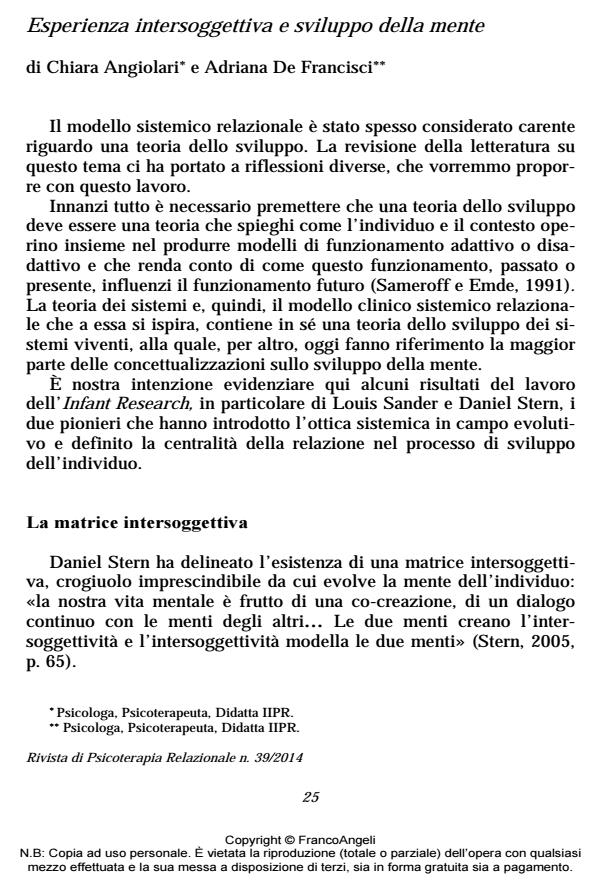Intersubjective experience and mind evolution
Journal title RIVISTA DI PSICOTERAPIA RELAZIONALE
Author/s Chiara Angiolari, Adriana De Francisci
Publishing Year 2014 Issue 2014/39
Language Italian Pages 16 P. 25-40 File size 74 KB
DOI 10.3280/PR2014-039002
DOI is like a bar code for intellectual property: to have more infomation
click here
Below, you can see the article first page
If you want to buy this article in PDF format, you can do it, following the instructions to buy download credits

FrancoAngeli is member of Publishers International Linking Association, Inc (PILA), a not-for-profit association which run the CrossRef service enabling links to and from online scholarly content.
Whereas the systemic relational model has always been considered deficient with respect to a theory of development, the Authors examine part of the contributions of the Infant Research, and in particular those of Louis Sander and Daniel Stern, to highlight the consistency between the systemic concepts applied in the evolution field and the relational model systemic. Starting with the centrality of the relationship and the importance of an intersubjective matrix for the development of the individual, the fundamental processes of adaptation that allow the survival of the child and the organization of the mind in interaction with the caregiver is hereby examined. In particular, the three principles of salience, that govern the formation of expectations on how the relationship and building adaptive strategies are hereby described: waiting regulation, rupture and repair, intense emotional moments. Finally, it is proposed the analysis of the isomorphism between the development process and the therapeutic process as a fundamental study to increase understanding and effectiveness of therapeutic work.
Keywords: Intersubjective matrix, development theory, systems theory.
Chiara Angiolari, Adriana De Francisci, Esperienza intersoggettiva e sviluppo della mente in "RIVISTA DI PSICOTERAPIA RELAZIONALE " 39/2014, pp 25-40, DOI: 10.3280/PR2014-039002